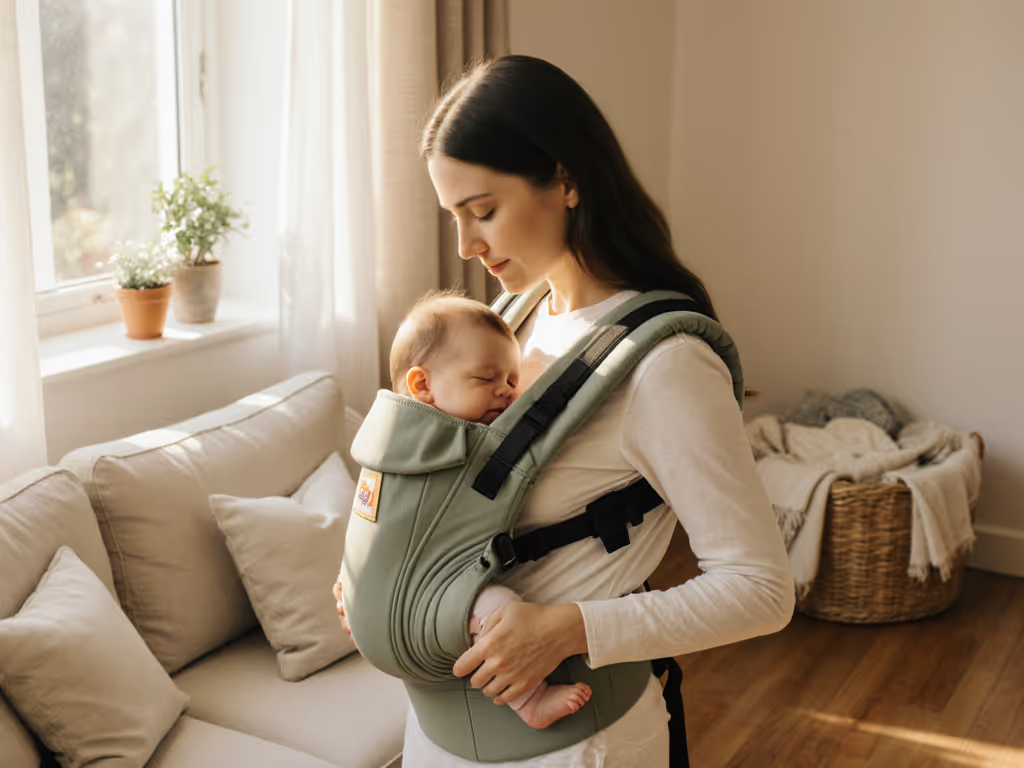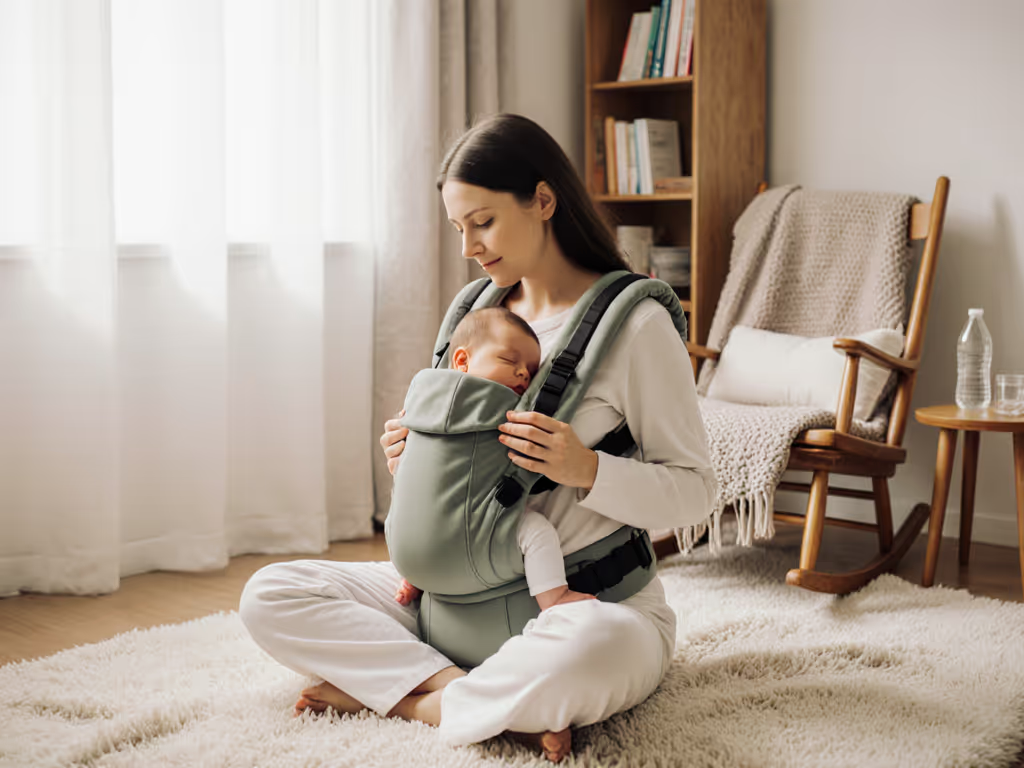
SPD-Friendly Babywearing: Calm Carrying Made Simple
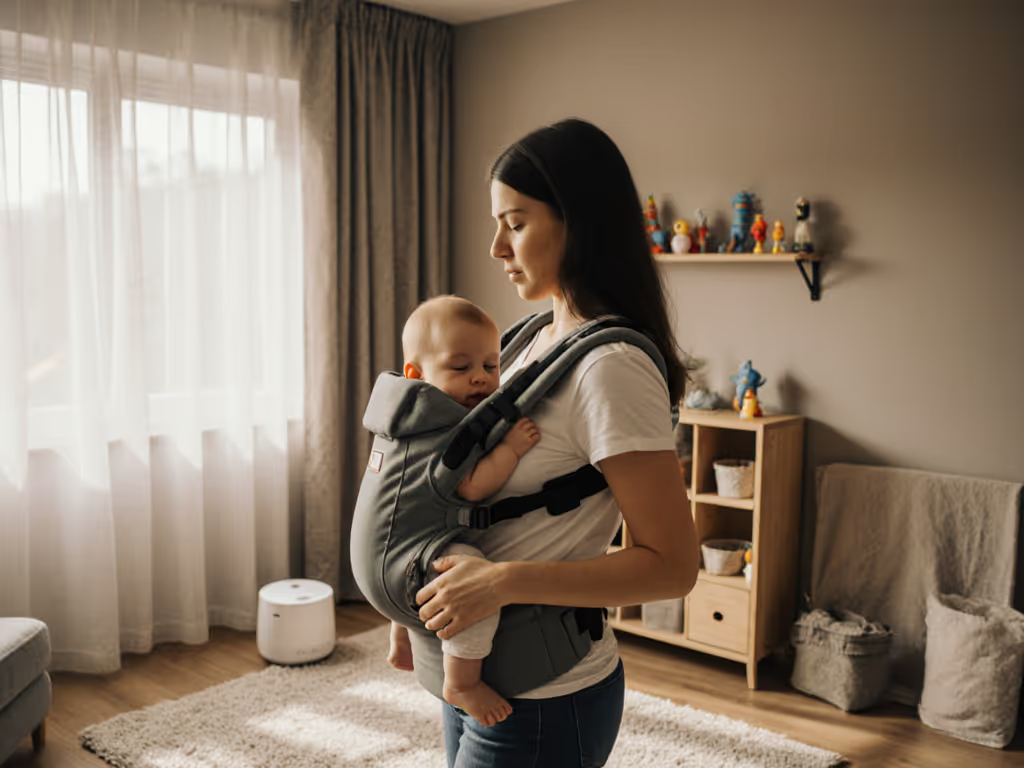
You know that 2 a.m. moment when everything feels too much, when the crying won't stop, your arms ache, and the world narrows to just you and your overwhelmed baby? That's exactly when sensory-friendly babywearing becomes your lifeline. For carrier adaptations that support SPD and other needs, see our special needs babywearing guide. For caregivers navigating babywearing for SPD (sensory processing disorder), the right carrier isn't just convenient; it's a science-backed tool to soothe tactile sensitivity, prevent sensory overload, and rebuild calm when nerves are frayed. Forget rigid rules or perfectionism; this is about gentle, repeatable steps that honor your reality. Because hands-free should feel stress-free, especially when seconds count and sleep feels like a myth.
Fast, calm setups turn chaos into competence you can feel.
Why Babywearing is a Sensory Lifesaver (Backed by Science)
SPD makes everyday sensations feel like storms: light touches sting, sounds roar, and movement overwhelms. But babywearing? It's nature's regulator. When your child nestles against you:
- Deep pressure from the carrier's fabric lowers cortisol (the stress hormone) and boosts oxytocin
- Rhythmic movement (like walking or rocking) calms the nervous system
- Your heartbeat and scent provide grounding sensory input researchers call "kinesthetic anchoring"
A landmark study in the Academic Journal of Pediatrics & Neonatology confirms this: babies worn chest-to-chest cry 43% less during peak fussiness windows. For SPD warriors, this isn't just comfort, it's sensory overload prevention. The key? Matching your carrier's design to your child's specific sensitivities.
Your SPD-Friendly Carrier Checklist: What Actually Matters
Forget trendy jargon. Focus on these SPD-friendly carrier features proven to reduce sensory friction:
✅ Fabric That Feels Like Safety
- Soft, breathable weaves (think cotton, linen, or bamboo) instead of stiff synthetics
- Seamless panels against baby's skin (no itchy tags or raised stitching)
- No plastic buckles near baby's face (hard edges = visual/tactile triggers)
✅ Fit That Respects Tactile Sensitivity
- Adjustable tightness (some kids need snug compression; others panic at pressure)
- Knee-to-neck support to prevent slumping (a safety must!) while allowing hip spread in the "M-position" for healthy development
- No dangling straps or crinkly fabrics (common triggers for auditory/tactile SPD)
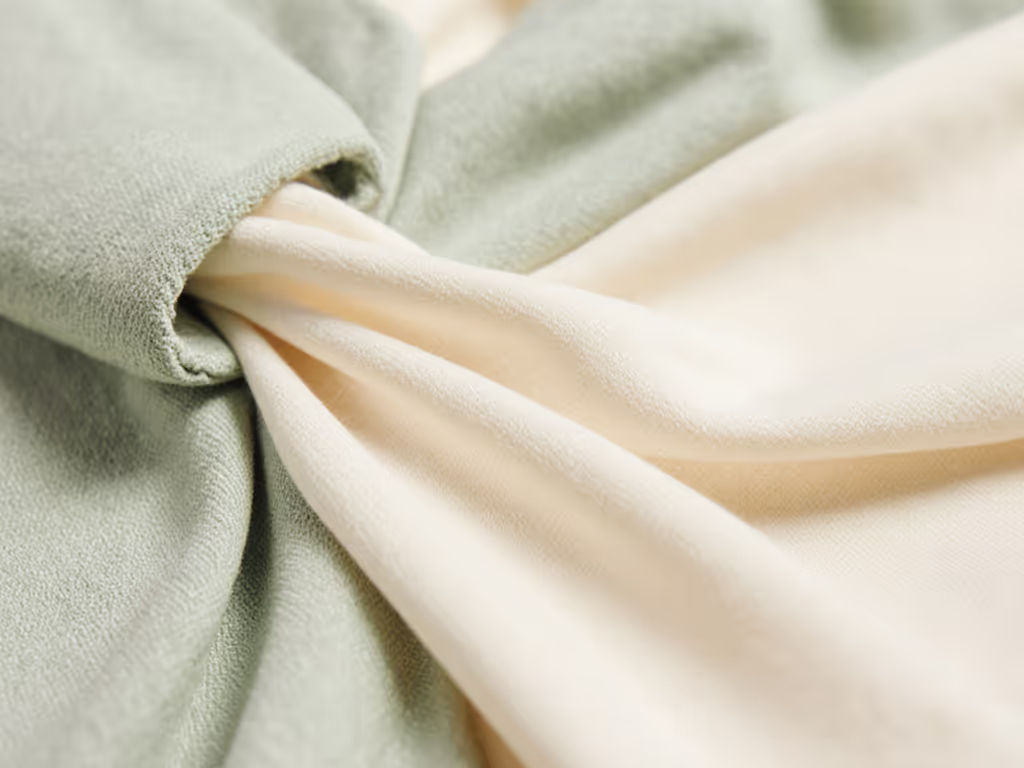
Safety checkpoint: In front carry, tilt baby's chin up. You should see two fingers between chin and chest. Airway clear = calm baby.
Spot the Signs: Is Baby Overloaded? (Your 10-Second Sensory Check)
When SPD flares, your baby can't tell you "this feels wrong." Learn these subtle cues during babywearing:
| Over-Responsive | Under-Responsive |
|---|---|
| Flinches at fabric | Leans heavily into carrier |
| Arching back | Doesn't react to movement |
| Hands covering ears | Limp body posture |
If you see overload signs:
- Stop walking (sudden stillness resets vestibular input)
- Hum softly (low-pitched sounds soothe better than high-pitched)
- Tighten carrier gently (if they seek pressure) OR loosen slightly (if overwhelmed)
This is where my 2 a.m. diaper-leak lesson kicked in, sometimes you're too tired to think, so automatic steps save everyone. Practice this sequence until your hands know it by heart. For a full safety checklist you can memorize, review the TICKS babywearing guidelines.
Gentle, Time-Stamped Steps for SPD Calm
Follow this 60-second routine when baby seems wired or wound down:
Step 1: Reset Your Breath (5 seconds)
- Inhale for 4 counts, exhale for 6 (this lowers your stress hormones first, babies mirror you)
Step 2: Mindful Connection (15 seconds)
- Look at your baby. Count their fingers and toes. Watch their facial expressions. Breathe in the scent of their head. Feel their gentle pressure against your chest. This anchors both of you in the now.
Step 3: Movement Match (40 seconds)
- For over-responsive babies: Slow, tiny rocking (feet flat on floor)
- For under-responsive babies: Firm bouncing on a yoga ball (hips stay supported!)
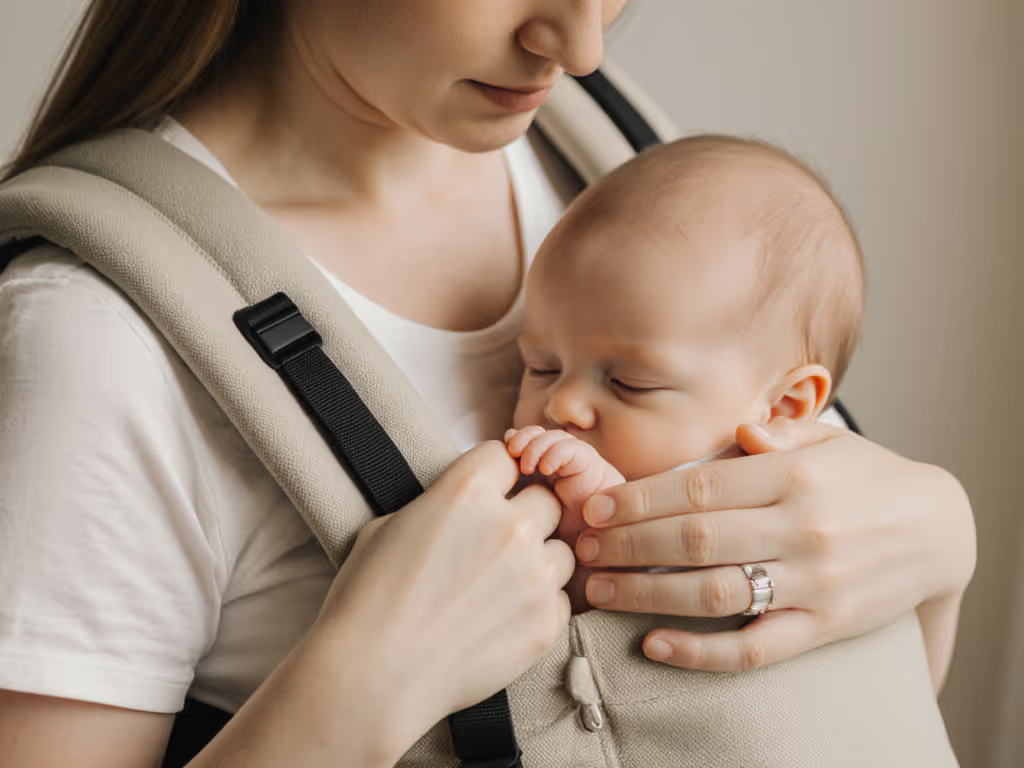
Safety checkpoint: Baby's knees should always be higher than their bottom in the "M-position." No slumping = happy hips.
Real Talk: What Not to Do (From Hard-Won Experience)
- Never force face-out carries: this floods SPD babies with unfiltered stimuli. Face-in toward your body = their safety net.
- Skip noisy carriers (zippers, crinkly coated fabrics), opt for quiet, soft-close buckles.
- Don't ignore your own needs: If you're overheating, baby absorbs that stress. Choose carriers with mesh panels for hot climates. Get practical stay-cool strategies in our summer babywearing guide.
If you're wondering about facing out, read our forward-facing safety comparison first. Remember: tactile sensitivity babywearing isn't about fancy gear. I've seen moms soothe SPD babies with a simple stretchy wrap and a cotton T-shirt, because connection calms, not complexity. Progress over perfection, always.
Your Actionable Next Step: Build Your 60-Second Calm Kit
Tonight, gather just three things:
- A soft carrier (or even a stretchy scarf)
- A low-pitched humming soundtrack (try whale songs or brown noise)
- Your favorite scent (a drop of lavender oil on your collar)
Tomorrow, practice the 60-second routine without baby:
- Strap on the empty carrier
- Hum while rocking gently
- Breathe smelling your collar
Do this 3x. Muscle memory builds confidence when you're sleep-deprived. When SPD chaos hits, you'll already know your calm sequence by heart, no thinking required.
You've got this. Every time you use gentle pressure and rhythmic movement to reset overwhelm, you're not just soothing your baby. You're wiring their nervous system for resilience. And that? That's competence you can feel long after the fog lifts. For more on how carrying supports brain development and regulation, see babywearing benefits.


